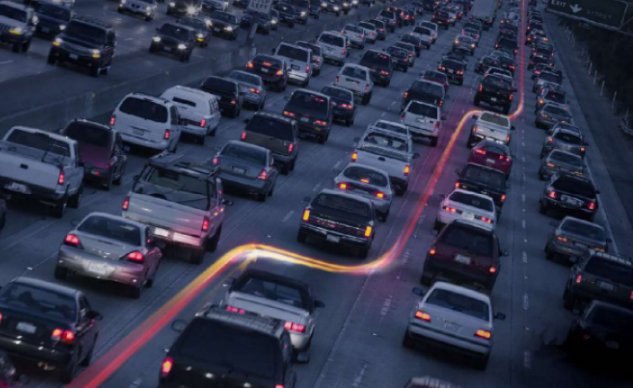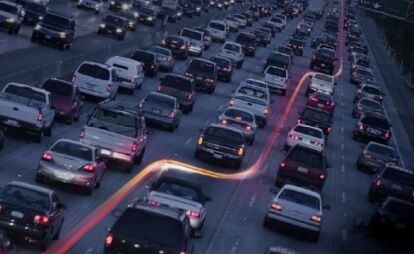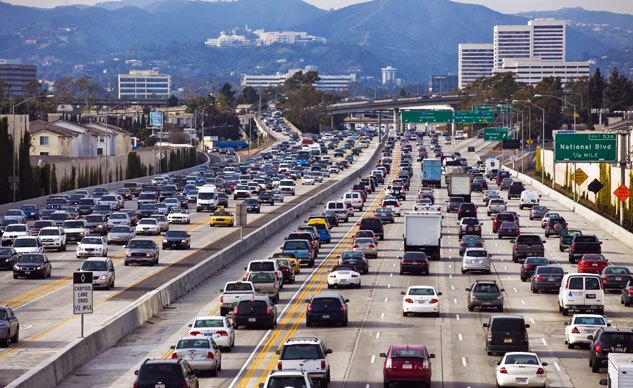Is Lane-Splitting Finally Coming to Arizona?
The Grand Canyon State could be the second state to legally allow the practice.
Motorcyclists in California have been enjoying the fruits of lane-splitting for decades now. For a long time, lane-splitting (or the more PC and less abrasive sounding, lane-sharing or filtering) was a gray area in California law because it was neither legal nor illegal, so it was permitted, or rather tolerated so long as the practice was done safely. In 2016, however, lane-splitting became 100% legal – not without limitations, but legal nonetheless.
Following California’s suit, Arizona is the most recent state to propose legislation that would allow motorcyclists to legally lane-share, which no doubt, is one of the best perks of riding a motorcycle. The Phoenix New Times reports that Arizona State Senator David Farnsworth has introduced proposition SB 1007, which would eliminate the wording that currently prohibits lane-splitting. Additionally, SB 1007 inserts provisions to develop educational guidelines that would help regulate and make the practice as safe as possible for all parties.
Senator Farnsworth was once a motorcyclist, but hasn’t owned a bike since 1970 and says he’s not entirely convinced the practice is completely necessary. According to the New Times, he is not particularly “passionate” about the bill, but introduced the proposition after his constituents asked him to and would be more enthusiastic if he saw statistics to prove its safety.
“I honestly wonder whether it’s safe,” Farnsworth told the New Times. “But I also think, man, what a practical thing for the motorcycle rider, because he’s going to get there a lot faster than I will.”
As traffic patterns continue to get worse all over our country’s cities, lane-sharing is becoming more of an attractive and viable option to reduce congestion, burn less gas and, not to mention, get people to their destinations quicker, as Senator Farnsworth pointed out.
Arizona is not the only state to propose the legalization of lane-splitting, as it joins Washington (SB 5378) and Oregon (SB 385) in the fight to allow the practice, but so far none have passed the legislation into law. As difficult as it may be to legalize lane-sharing in the U.S., the practice is commonplace in most other parts of the world, particularly in the highly urbanized areas of Europe and Asia. However, the motorist culture is admittedly very different here in America. And the same driving culture varies greatly from state to state and city to city, making the legalization of lane-sharing a case-by-case process.
Most of us remain hopeful that lane-sharing will one day be commonplace in as many states that take it into consideration as possible. After all, as recent elections go to show, we all have a voice, and if we all speak up loud enough, we can be heard. Recent studies from the University of California Berkeley demonstrate that lane-sharing is in fact a safer and more effective riding technique that can be beneficial to riders so long as it’s executed responsibly. Here are some of the study’s key findings:
- Lane-splitting is safe if done in traffic moving at 50 mph or less, and if motorcyclists do not exceed the speed of other vehicles by more than 15 mph.
- 69 percent of lane-splitting motorcyclists were exceeding the traffic speed by 15 mph or less; speed differentials up to 15 mph were not associated with changes in the frequency of injury.
- Compared to riders who were not splitting lanes, lane-splitting motorcyclists were markedly less likely to suffer head injury (9 percent vs. 17 percent), torso injury (19 percent vs. 29 percent) or fatal injury (1.2 percent vs. 3 percent).
- Lane-splitting riders were significantly less likely to be rear-ended than non-lane-splitting riders (2.6 percent vs. 4.6 percent).
- Lane-splitting motorcyclists were more likely to be wearing a full-face helmet than other motorcyclists (81 percent vs. 67 percent).
- Compared to other motorcyclists, lane-splitting riders were more often riding on weekdays and during commuting hours, were using better helmets and were traveling at slower speeds.
- Lane-splitting riders were less likely to have been using alcohol.
You can read the full report here, though the findings above are thought-provoking nonetheless, but we will let you come to your own conclusions. One thing to consider, however, is that these studies were conducted in California, where not only is lane-sharing legal, the use of a helmet is mandatory as well. It’s obviously unknown how drivers in other states, unaccustomed to motorcyclists sharing their lane, would react and how helmetless riders would skew the accident / injury reports. Only time will tell…
On January 8th, just two days ago, another bill, SB 1015, was introduced by Arizona Senator John Kavanagh which aims to achieve the same goal as SB 1007. The difference, however, is that SB 1015 would require riders to wear a helmet if they choose to lane-split. We don’t know where the AMA stands on SB 1007, however they would likely be against SB 1015 due to their support of motorcyclists’ rights to not have to legally wear a helmet in states where it isn’t required, Arizona being one of them. Both bills go up for vote later this month.
All in all, the benefits of legalizing lane-sharing reach further than just getting you to your destination quicker than sitting in a car. Hopefully when, not if, lane-sharing becomes legal and more commonplace around America, it will create more interest and become more appealing for people to learn to ride motorcycles, which in the end would benefit us all, but only if we do it responsibly.
As always, be safe and be smart out there.
More by Brent Jaswinski



































Comments
Join the conversation
Florida next Pleeeease
It is ridiculous to not allow lane sharing for motorcyclists. I live in Tampa and had a serious accident in October. If I had the option available to me I would have positioned my self to the beginning of the lane and wouldn't have been involved in the accident.
I spent the month of November in NY and noticed that all motorcyclist lane split.